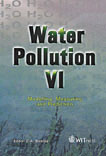Cost-effective Versus Proportional Nutrient Load Reductions To The Baltic Sea: Spatial Impact Analysis With A 3D-ecosystem Model
Price
Free (open access)
Transaction
Volume
49
Pages
10
Published
2001
Size
1,525 kb
Paper DOI
10.2495/WP010251
Copyright
WIT Press
Author(s)
T. Neumann & G. Schernewski
Abstract
Cost-effective versus proportional nutrient load reductions to the Baltic Sea: Spatial impact analysis with a 3D-ecosystem model T. Neumann & G. Schernewski Baltic Sea Research Institute, Warnemunde, Germany Abstract A 3D-biochemical model of the Baltic Sea was deployed to investigate the ef- fects of two different 50 % nitrogen and phosphorus load reductions scenarios on the Baltic Sea. The first scenario, according to the Helsinki Commission, as- sumed a proportional 50 % load reduction in all riparian countries. The second was based on a cost-effective optimal approach by Gren [1], with significant re- gional differences in load reduction. The comparative simulations covered a pe- riod of 16 month (January 1980 - May 1981). In the central Baltic Sea a 50 % load reduction caused a decrease in inorganic nitrogen concentration by 39 % and inorganic phosphorus declined by 8.3 % in the upper water layer (30 m). Chlorohyll-a, as an indicator for algae biomass, was reduced by 9 %. The c
Keywords





